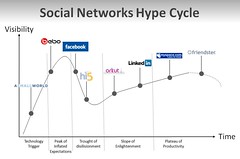Now, when you buy something (that thing you used to call 'media'), you're not paying for eyeballs, you're paying for a platform. A platform you can use to build your own audience, one that you can nurture, educate and ultimately convert. You'll take care of this audience differently, measure them differently and have a different sales cycle. This isn't natural, but it works.
I am fortunate to work for a company, Harvard Business Publishing, that has a world class brand and a terrific platform. However, I do not believe that we have taken advantage of this platform to attract people across all of our properties. We have the ability to offer a plethora of content, from blogs by leading experts, books, Harvard Business Review articles, Harvard cases, online leadership development and Executive Education. To move towards Seth's vision, we need to leverage all of these properties to build an audience. Like any company that has multiple product lines, we tend to work in our own silos, worrying only about our audience. However, if we were to look at all of our properties and audiences as one and deliver advice and content that is relevant and timely then we could build a hugely successful platform that would allow us to get to the conversion rates that Seth mentions.
The problem is, how do we get there?

![Reblog this post [with Zemanta]](http://img.zemanta.com/reblog_e.png?x-id=444ee884-76d7-4809-a651-745c44ccb732)

![Reblog this post [with Zemanta]](http://img.zemanta.com/reblog_e.png?x-id=51476e58-1b3c-4fe0-812d-98a1e5970218)

![Reblog this post [with Zemanta]](http://img.zemanta.com/reblog_e.png?x-id=32baa0bf-07ab-44d5-a6a5-f7b96e5fa60e)

![Reblog this post [with Zemanta]](http://img.zemanta.com/reblog_e.png?x-id=dfc650a5-0729-48c7-9a23-b3ef3a39ced8)